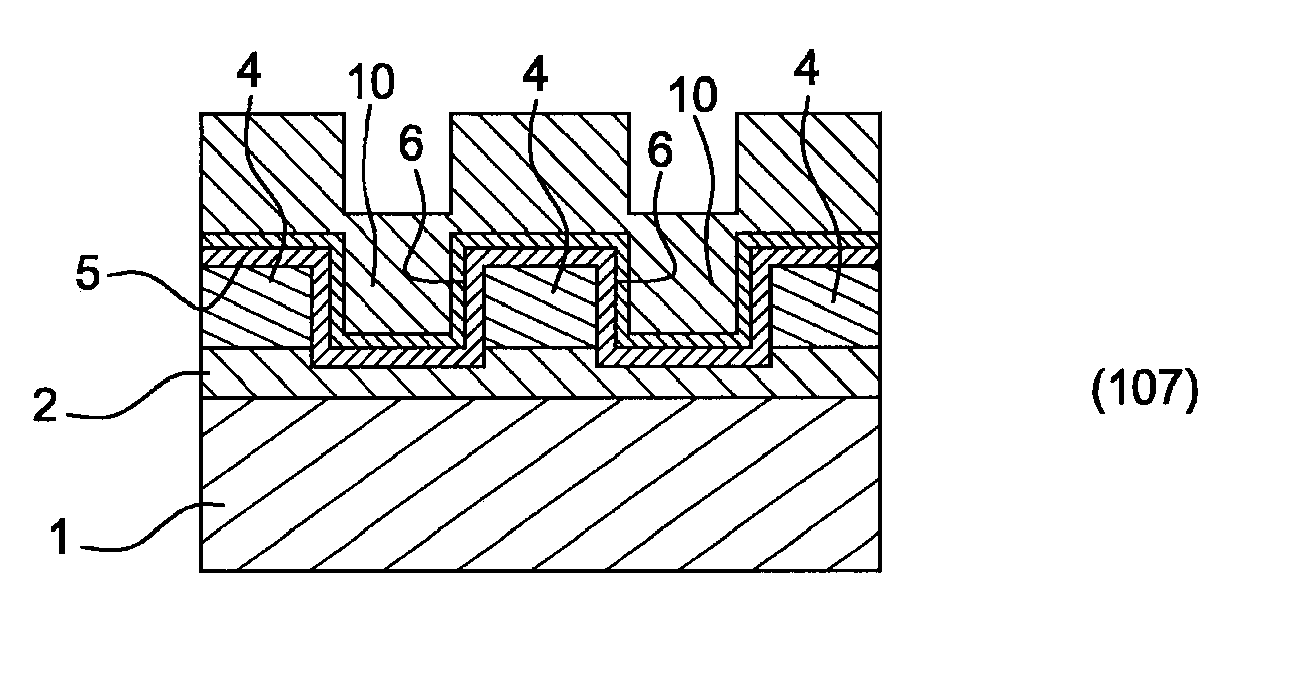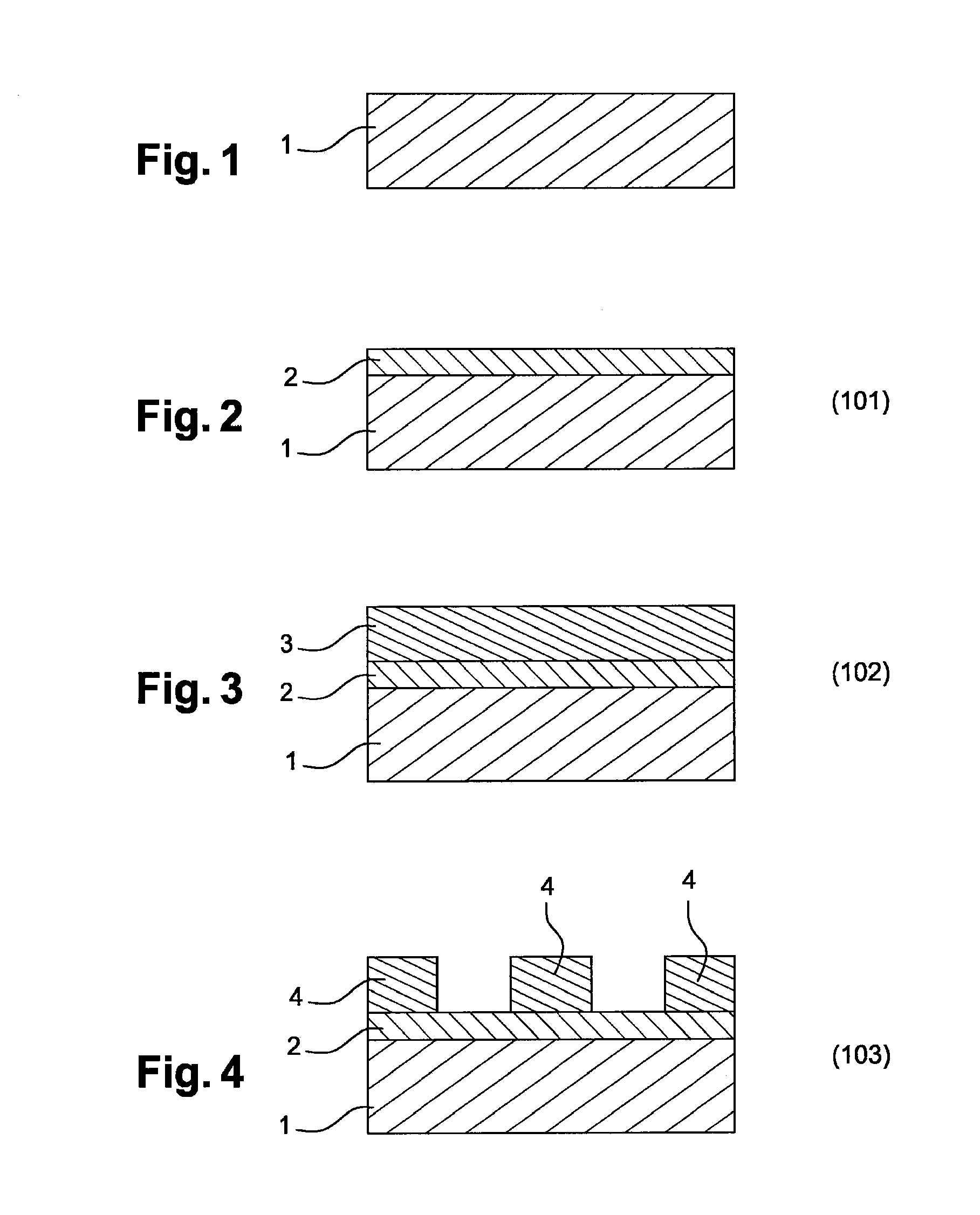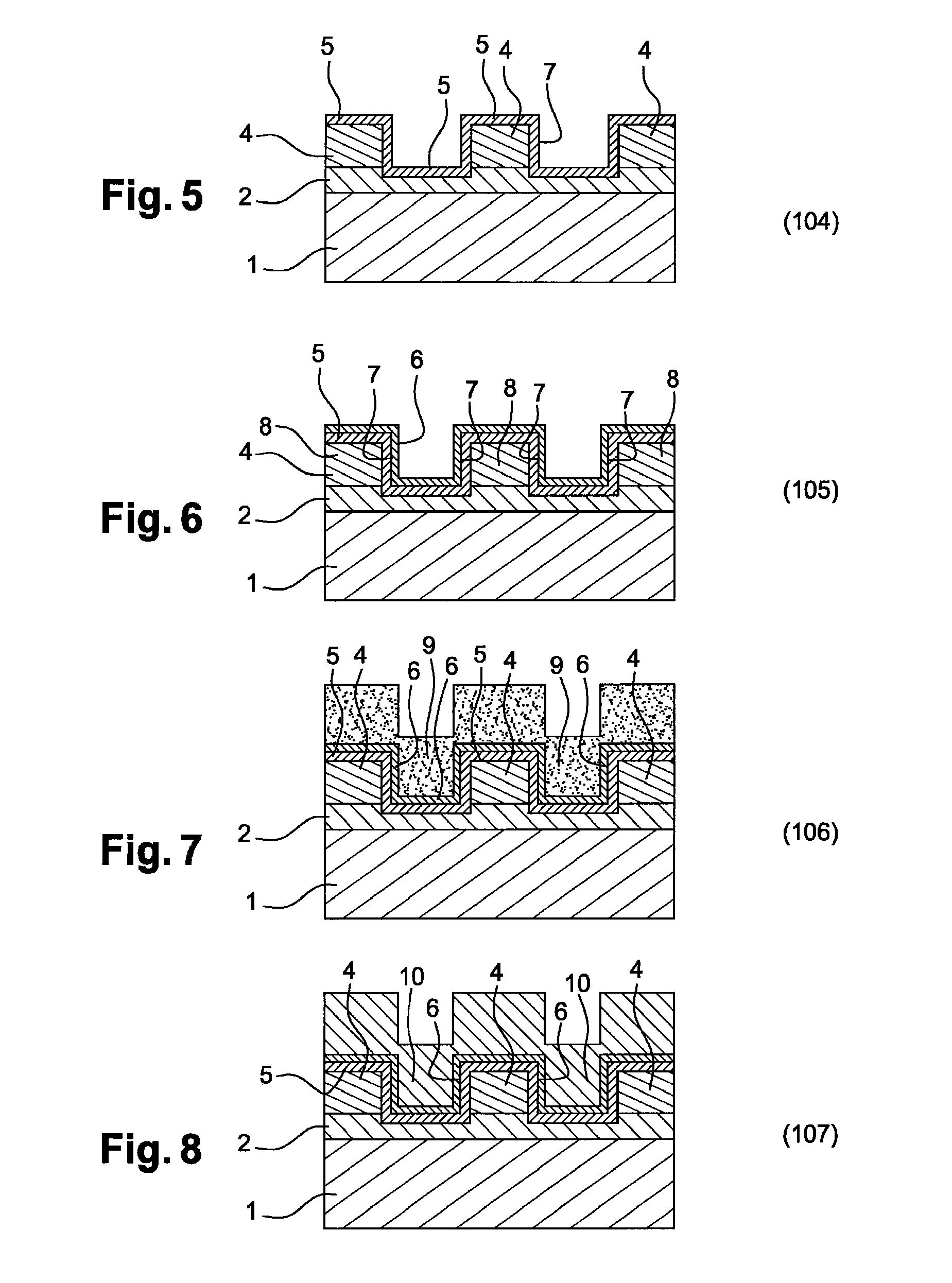Method for making patterns on the surface of a substrate using block copolymers
a technology of copolymer and pattern, which is applied in the manufacture of microstructured devices, electrical equipment, coatings, etc., can solve the problems of complex graphoepitaxy method, limited resolution obtained by this method, and resin pattern in the rigid substrate complicating the graphoepitaxy method
- Summary
- Abstract
- Description
- Claims
- Application Information
AI Technical Summary
Benefits of technology
Problems solved by technology
Method used
Image
Examples
first embodiment
[0035]FIGS. 1 to 10, a method according to carrying out the invention.
[0036]For greater clarity, identical or similar elements are marked by identical reference signs in all of the figures.
DETAILED DESCRIPTION OF AT LEAST ONE EMBODIMENT
[0037]A method for making a pattern on the surface of a substrate 1 by graphoepitaxy according to an embodiment of realising the invention will now be described with reference to the figures.
[0038]The method firstly comprises a step 101 of depositing an antireflective layer 2 on the surface of the substrate 1. This antireflective layer 2 is preferably deposited by spin coating. This antireflective layer 2 is for example a BARC (Bottom Anti-Reflective Coating) layer, a DARC (Dielectric Anti-Reflective Coating) layer, a SiARC (Silicon layer containing an Anti-Reflective Coating) layer, or a stack of the latter layers. After the deposition, the layer is annealed in order to cross link it.
[0039]The method comprises a step 102 of depositing a layer of resi...
second embodiment
[0043] this step 104 of curing the patterns in the resin 4 by producing a layer of amorphous carbon 5 on the surface of the patterns in the resin may be carried out by bombarding helium or argon ions onto the patterns in the resin 4. In this case, the patterns in the resin 4 are subjected to ion implantation treatments using ionic species such as He or Ar, with an energy between 1 and 5 eV, and for vacuums of the order of 5 e-7 to 5 e-6 torr. The implanted dose will be adapted by those skilled in the art, using available simulation software (for example SRIM software), to obtain an implantation profile enabling a layer of graphite of the required thickness to be obtained on the surface.
[0044]In both cases, this step of curing the patterns in the resin by producing a layer of amorphous carbon on the surface of the patterns in the resin 4 enables the patterns in the resin 4 to resist both the solvents used for the deposition by spin coating and to annealings going up to 350° C. Furthe...
PUM
 Login to View More
Login to View More Abstract
Description
Claims
Application Information
 Login to View More
Login to View More - R&D
- Intellectual Property
- Life Sciences
- Materials
- Tech Scout
- Unparalleled Data Quality
- Higher Quality Content
- 60% Fewer Hallucinations
Browse by: Latest US Patents, China's latest patents, Technical Efficacy Thesaurus, Application Domain, Technology Topic, Popular Technical Reports.
© 2025 PatSnap. All rights reserved.Legal|Privacy policy|Modern Slavery Act Transparency Statement|Sitemap|About US| Contact US: help@patsnap.com



